Idhayam Parikshan Lab Limited is involved in testing fish products. Food testing labs play a crucial role in ensuring the quality and safety of food products, including those derived from fish and other aquatic organisms. They conduct various tests to check for factors such as freshness, contamination, nutritional content, and adherence to regulatory standards. These tests help ensure that fish products are safe for consumption and meet the quality standards specified by regulatory authorities. Idhayam Parikshan lab Limited plays a vital role in upholding food safety and quality in the industry.Fish and fish products are subjected to various tests in food laboratories to ensure their quality, safety, and compliance with regulatory standards. Total Viable Count Determines the overall microbial load in the fish product. Specific Pathogen Testing Detects the presence of harmful bacteria such as Salmonella, Listeria, and Vibrio species. E. coli and Coliform Count Indicates contamination and hygiene levels. Yeast and Mold Count Identifies the presence of spoilage organisms. Histamine Levels Especially important in testing for scombroid poisoning in certain fish species. Heavy Metal Testing Checks for the presence of mercury, cadmium, lead, and other heavy metals, which can be harmful if consumed in large quantities. Pesticide and Antibiotic Residue Testing Ensures fish products are free from harmful chemical residues. pH Level Measures the acidity or alkalinity of the product, affecting its texture and taste. Additives and Preservatives Checks for the presence and concentration of any added substances. Texture Analysis Evaluates the texture of fish products, including firmness, tenderness, and consistency. Color Analysis Determines the color attributes of fish flesh, which can indicate freshness and quality. Water Activity Measures the availability of water in the product, which affects its shelf life. Organoleptic Testing Involves taste, smell, texture, and visual evaluation by trained sensory panelists. Triangle Tests Discriminates between different fish products to identify any differences in sensory properties. Fish Allergen Testing Ensures the absence of fish allergens in products where fish is not declared as an ingredient. Accelerated Aging Tests Predicts the product’s shelf life under various conditions. Storage Studies Monitors changes in product quality over time under recommended storage conditions. DNA Testing Identifies the species of fish to prevent mislabeling and ensure authenticity. Labeling Compliance Ensures the product’s labeling meets regulatory requirements. Country of Origin Verification Validates the origin of the fish to prevent misrepresentation. Comprehensive testing of fish and fish products is essential to guarantee their safety, authenticity, and quality, and to provide consumers with accurate information about the products they consume. Testing protocols may vary based on the specific type of fish product being examined and the regulations in place in a particular field. Fish Products
Our Services
















